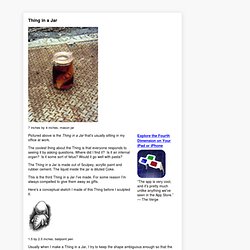

How to find true friends (and love) in 45 minutes. David Rowan Editor of Wired magazine This article was featured in Times Magazine, 5 November.

There's a shorter version in the Ideas Bank section on the current Wired magazine. Thanks to WPP's Stream for making my little experiment possible... Can you make someone become intimately close to you -- even fall in love with you -- in less than an hour? Dr Aron -- known to friends as Art -- runs the Interpersonal Relationships Lab at Stony Brook University on the north shore of Long Island, east of New York City, and he has love on his mind. Back in 1997, Aron and colleagues published a paper in the Personality and Social Psychology Bulletin on "The Experimental Generation of Interpersonal Closeness". They arranged volunteers in pairs, and gave them a list of 36 questions that, one by one, they were both asked to answer openly over an hour "in a kind of sharing game". But would the "fast friends" experiment also work with more worldly senior executives and entrepreneurs?
Thing in a Jar. Thing in a Jar 7 inches by 4 inches, mason jar Pictured above is the Thing in a Jar that's usually sitting in my office at work.

The coolest thing about the Thing is that everyone responds to seeing it by asking questions. Where did I find it? Is it an internal organ? The Thing in a Jar is made out of Sculpey, acryllic paint and rubber cement. This is the third Thing in a Jar I've made. Here's a conceptual sketch I made of this Thing before I sculpted it. 1.5 by 2.5 inches, ballpoint pen Usually when I make a Thing in a Jar, I try to keep the shape ambiguous enough so that the viewer cannot really pin down exactly what they're looking at.
The glass jar acts as a physical barrier, preventing the viewer from directly accessing its contents. Mental_floss Blog & The House of Blood. Where is the house of blood? It could be your house with these home furnishings, most of which are available at the click of a mouse. Individually, they might be described as conversation pieces; put them all together and you'll have a house of horrors no one would want to visit twice. One of these products used the description "Gruesome, bloody, and absolutely offensive. The Art of Influence.
Secrets to complaining effectively, motivating loved ones, and getting what you want without being a jerk. Illustrations by Lou Brooks Babies and psychopaths have one thing in common: They're excellent at getting what they want. Many of us could learn a thing or two from these creatures, tantrums and dirty tactics notwithstanding.
That's not to say that, like these ingrates, we should feel entitled to everything we want. Many argue that as a culture, we need urgent lessons in giving, not getting. But for some, grabbing the brass ring is a constant source of stress and confusion. Were it uniformly advantageous to be aggressive, timid, positive, or negative in pursuit of one's goal, evolution would have selected for only such types. Complain to Win —Not to Feel Worse Kvetch, Bitcher, Debbie Downer: No one likes a chronic complainer, and we've got multiple derogatory terms to prove it. If you decide you want to lodge a complaint, make a plan, says Winch.
Figure Out What Others Want. How to Persuade People with Subconscious Techniques. Edit Article Edited by DumbLittleMan.com, Zoe Volt, Krystle, Teresa and 71 others Persuasiveness is an important skill everyone should learn because it is useful in countless situations. At work, home, and in your social life, the ability to be persuasive and influence others can be instrumental for achieving goals and being happy.
Learning about the tricks of persuasion can also give you insight into when they're being used on you. The biggest benefit of this is that money will stay in your pocket as you realize just how sales people and advertisers sell you products that you don't necessarily need. Ad. How we change what others think, believe, feel and do.